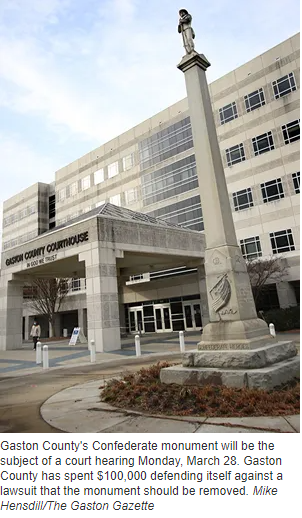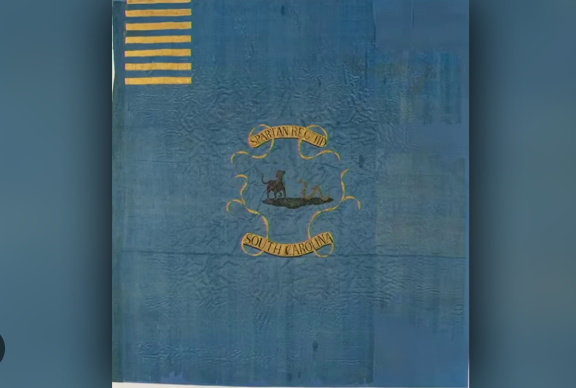NORTH CAROLINA: Gaston Confederate Monument Has Racist Past, Civil War Historian Says
The Confederate monument in front of the Gaston County courthouse is a monument to white supremacy that celebrates a false narrative about the Civil War and sends a message to African Americans in the community that they are not welcome, according to a historian that specializes in the Civil War.
The monument was given to Gaston County more than a century ago by the United Daughters of the Confederacy, a group that has broadly perpetuated the Lost Cause narrative, an inaccurate narrative about the racist roots of the Civil War that casts Confederate veterans as war heroes who defended states’ rights while minimizing the brutalities of slavery and its role in the conflict, said Dr. Adam Domby, an associate professor of history at Auburn University.
“They’re not celebrating history. They’re celebrating a memory,” said Domby. “A history is something that’s based on what happened in the past. The Lost Cause narrative isn’t based on reality, it’s based on loss. That’s the difference.”
Domby, the author of “The False Cause: Fraud, Fabrication, and White Supremacy in Confederate Memory,” said that Gaston County’s fight to keep the monument is a celebration of a story about the Civil War that has always been false.
“It makes claims that are false. For instance, it claims the Civil War had nothing to do with slavery. Let me be very explicit as a historian: the Civil War had everything to do with slavery. There is no Civil War without slavery as an institution,” Domby said. “So you’re starting with a false narrative, designed to uphold white supremacy, that excludes African Americans, and it sends a message to African Americans, ‘You don’t belong here. … You don’t belong in this courthouse,” Domby said.
The monument’s true history, Domby said, is evident in the speech that was given when the cornerstone was laid for Gaston County’s monument in 1912. The keynote speaker for the ceremony was North Carolina Attorney General Thomas Bickett, a man whose father was a Confederate soldier. Bickett was elected governor of the state four years later.
In his speech, which was documented at the time by The Gastonia Gazette, Bickett praised white supremacy, criticized the right of Black men to vote, justified the Civil War and praised the supposed battlefield bravery of Confederate soldiers, amplifying the false narrative that the United Daughters of the Confederacy promoted.

“When we build a monument to the Confederate soldier, we consecrate ourselves to the virtues he embodies,” Bickett said. “Hence it is with legitimate pride that I hail this day when the good county of Gaston leaves factories and fields, … and makes her offering of love upon the altar of a lost cause and lays the cornerstone of a monument to those mighty spirits of 61 and five who had a faith and fought for it and died in it.”
Veterans, Bickett said, “stood for the integrity of a whole civilization and a white race.”
“That’s what they wanted it to be,” Domby said. “They wanted it to embody the veteran. And what does he say the veteran does? That same day, that same speech, right, when you listen to him, he says, ‘this is about … overturning of reconstruction, the institution of white supremacy, and the way that the South reasserted itself.”
The statue was not put up right after the Civil War, but during a period in the early 1900s when Confederate monuments were moved from cemeteries to more prominent positions in the community. The timing and the placement of the monument were intentional, Domby said.
“North Carolina banned African Americans from voting for all intents and purposes in 1901, and after that moment, Confederate monuments started going up all over,” Domby said.
At that time, celebrating the Confederacy was tied to the disenfranchisement of African Americans.
“And by putting it in front of a courthouse, you send a very different message, and this was on purpose,” Domby said. “It was meant to remind everyone who was supposed to be in charge, … to stay in charge, who had power and who didn’t. And so when they put it in front of a courthouse, it’s not a memorial. It’s about current values.”



